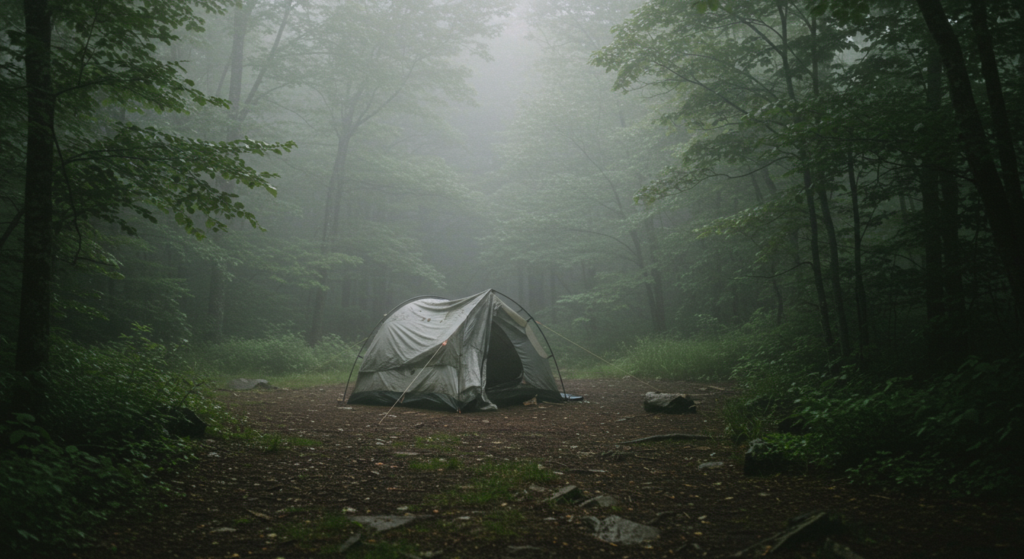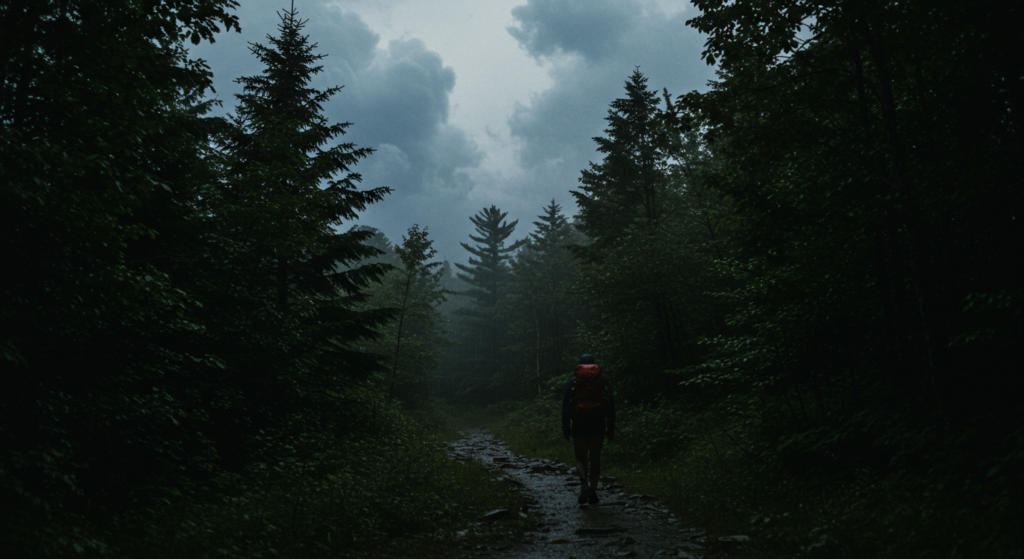The Trail of Tragedy: Exploring the Murders and Disappearances on the Appalachian Trail

The Appalachian Trail (AT), an iconic pathway stretching over 2,190 miles, has been a cherished destination for adventurers since its completion in 1937. Every year, the trail beckons more than three million hikers, eager to immerse themselves in the breathtaking beauty of the Eastern United States. Originally proposed in 1921, the trail has undergone continuous improvements and changes over the years, ultimately earning the distinction of being designated the Appalachian National Scenic Trail under the National Trails System Act of 1968. While the AT has witnessed countless triumphs and unforgettable moments, it has also been marked by cases of missing hikers, encounters with unforeseen difficulties, and even a handful of mysterious murders.
The AT is not without its share of challenges, and occasionally, hikers go missing or face unexpected difficulties along the trail. Despite these occurrences, it’s important to emphasize that the vast majority of hikers complete their journeys unscathed, reveling in the soul-stirring experience of the AT. However, over the years, the Appalachian Mountains have held their secrets close, with hundreds of individuals reported missing in its vast wilderness, some never to be found. These tales of disappearances add an air of intrigue to the trail, captivating the imagination of adventurers and igniting a quest for answers.
As the Appalachian Trail continues to weave its way through the rugged landscape, the question arises: How many people have actually gone missing on the trail? Each year, an average of six people go missing on the Appalachian Trail, which has also witnessed a total of 11 recorded murders since 1974, averaging one every four years, according to The Appalachian Trail Conservancy. While these incidents are rare, they serve as a haunting reminder that even in the midst of natural splendor, human darkness can cast its shadow. Despite these tragic events, they remain outliers in the larger tapestry of the AT’s vibrant history.
Missing on the A.T.

Geraldine Largay
Geraldine Largay’s disappearance on the Appalachian Trail is one of the most tragic and well-known cases in the trail’s history. A 66-year-old hiker from Tennessee, Largay set out in July 2013 to complete a section of the trail with a friend. During their journey, the two hikers became separated, and Largay was last seen on July 22, 2013, near the Poplar Ridge Lean-to in Maine. Her disappearance sparked a massive search effort, involving hundreds of volunteers, professional search and rescue teams, and local authorities. Despite their combined efforts, no trace of her was found during the initial search.
It wasn’t until October 2015, more than two years later, that a surveyor conducting routine work stumbled upon Largay’s remains in a heavily wooded area far from the trail. Alongside her scattered bones, her tent and personal belongings were discovered, providing some insight into her final days. Investigators believe Largay became lost after leaving the trail, potentially to find a private spot or due to disorientation. Her location, hidden deep within the dense forest, made it difficult for search teams to locate her despite their thorough efforts.
The medical examiner’s report revealed that Largay had died of starvation and exposure to the elements. Notes found in her journal suggested that she survived for several weeks before succumbing to the harsh conditions. Her story serves as a sobering reminder of the risks associated with wilderness hiking, particularly for those who are unprepared for emergencies. It has since inspired increased safety awareness among Appalachian Trail hikers, emphasizing the importance of navigation tools, communication devices, and staying with companions.
Thelma Marks
The disappearance of Thelma Marks in 1981 remains one of the more haunting cases tied to the Appalachian Trail. Marks, a 56-year-old hiker from Pennsylvania, vanished while hiking a section of the trail. Her disappearance sparked a widespread search involving local authorities and volunteers, but initial efforts yielded no clues to her whereabouts. The search was hindered by the trail’s rugged terrain and dense forests, which made thorough exploration difficult. Despite continued efforts, no significant evidence was uncovered in the immediate aftermath of her disappearance.
It wasn’t until four years later that her remains were discovered in a ravine near the trail. A hiker stumbled upon the skeletal remains, along with items of clothing that helped identify Marks. An investigation determined that she had died from exposure to the elements, though the exact circumstances of her death remain unclear. The location where her body was found raised questions about whether she had fallen or been pushed off a nearby cliff. The lack of witnesses or conclusive evidence left authorities unable to definitively rule out foul play, and the case remains unresolved to this day.
Marks’s story is a somber reminder of the risks and uncertainties faced by hikers on the Appalachian Trail. It highlights the challenges of navigating the trail’s remote and unforgiving landscape, where accidents or disorientation can quickly become life-threatening. The lack of closure in her case also reflects the potential for mysteries to endure in such vast wilderness areas. Her disappearance, alongside other unresolved cases, has contributed to ongoing discussions about hiker safety and the need for better preparedness and communication tools for those venturing into the backcountry.
Factors for Going Missing on the Appalachian Trail

One of the challenges of hiking the Appalachian Trail is that it can be difficult to navigate, especially for those who are unfamiliar with the area. The trail passes through some of the most remote and isolated regions of the eastern United States, and hikers must contend with steep climbs, rocky terrain, and unpredictable weather conditions. In addition, the trail is marked by a series of white blazes painted on trees and rocks, which can be difficult to spot in some areas. For those who are not well-prepared or who lack experience hiking in wilderness areas, these challenges can be overwhelming.
Another factor that may contribute to disappearances on the Appalachian Trail is the presence of dangerous wildlife. The trail passes through areas inhabited by bears, snakes, and other predators, and hikers must take precautions to avoid encounters with these animals. While attacks by wildlife are relatively rare, they can be deadly when they do occur.
In addition to natural hazards, the Appalachian Trail is also home to a number of shelters and campsites that can attract unsavory characters. Some hikers have reported encountering individuals who appear to be living in these areas and who may pose a threat to others. While the vast majority of hikers on the trail are law-abiding and respectful of others, there have been isolated incidents of violence and theft.
Murder on the A.T.

Lollie Winans and Julianne Williams
The murders of Lollie Winans and Julianne Williams in 1996 remain among the most chilling crimes associated with the Appalachian Trail. The two women, aged 27 and 24 respectively, were an adventurous pair who shared a love for the outdoors. On their trip, they set out to hike and camp in Shenandoah National Park, not far from the Appalachian Trail. Their final campsite was near the Skyland Resort, a popular area within the park. Tragically, their trip ended in horror when both women were found murdered on June 1, 1996. They had been bound, gagged, sexually assaulted, and brutally slashed to death.
The investigation into their deaths was massive, involving the FBI, the National Park Service, and local law enforcement. Investigators combed through the park for evidence, interviewed potential witnesses, and followed up on tips, but leads quickly dried up. Despite the high-profile nature of the case, authorities struggled to identify a suspect. The brutal and calculated nature of the murders suggested the killer was experienced and familiar with the area. For years, the lack of a breakthrough left the case cold, haunting investigators and the local community.
In 2002, Darrell David Rice, a man with a history of violence against women, was indicted for the murders after being linked to the case through circumstantial evidence. He had previously served time for an unrelated kidnapping and attempted murder case, and prosecutors alleged that he targeted Winans and Williams because of their sexual orientation. However, DNA evidence from the crime scene did not match Rice, and the charges were eventually dropped in 2004. The case remained unsolved until 2019 when advances in DNA technology identified a new suspect. DNA evidence linked the murders to Richard Evonitz, a convicted serial killer who had died by suicide in 2002 while fleeing police. This revelation provided some closure, but questions linger about how he avoided detection for so long and whether he may have been responsible for other unsolved crimes in the region.
Rebecca Wright
The murder of Rebecca Wight in May 1988 shocked the Appalachian Trail community and remains one of the most tragic and high-profile cases in the trail’s history. Wight, a 29-year-old hiker from Pennsylvania, was hiking with her girlfriend, Claudia Brenner, along a remote section of the trail in Pennsylvania. The two women were enjoying a peaceful outing when they were suddenly approached by a man named Stephen Roy Carr. Carr, who was armed with a high-powered rifle, aggressively demanded that the women surrender their backpacks. When they refused, he opened fire, shooting Wight twice at point-blank range. She was killed instantly.
Brenner, though shaken and terrified, managed to escape the attack and run into the woods. She found a nearby road where she flagged down a motorist, who alerted the authorities. Despite her trauma, Brenner was able to provide a description of the attacker and the vehicle he had used. Law enforcement quickly launched a manhunt, and Carr was apprehended just days later. Evidence found at the crime scene, including the rifle and the stolen backpacks, tied him directly to the murder. He was charged with first-degree murder and, in 1989, was sentenced to life in prison without the possibility of parole.
Carr’s motive for the crime appeared to be robbery, though investigators also uncovered disturbing details about his criminal background and his hostility toward women. His actions seemed to be fueled by a deep-seated anger, and it was later revealed that he had been involved in prior incidents of harassment and threats. The murder of Rebecca Wight remains a somber reminder of the dangers that can exist, even in the relative isolation of nature. Her death, along with Brenner’s courage in escaping and bringing Carr to justice, sparked conversations about safety on the Appalachian Trail and the risks faced by hikers, particularly those in vulnerable situations. Carr’s life sentence provided some justice for Wight, but the case also highlighted the need for greater awareness and vigilance on the trail.
Scott Lilly
The murder of Scott Lilly in 2013 is one of the most unsettling and mysterious cases on the Appalachian Trail. Lilly, a 30-year-old hiker from Indiana, had been enjoying a solo hike in the southwestern region of Virginia when his life was tragically cut short. His remains were discovered near the trail by fellow hikers, who were shocked to find that he had been shot to death. Investigators quickly launched a search for clues and a suspect, but despite an extensive investigation, Lilly’s killer was never identified. The crime was particularly perplexing because there was no apparent motive, and no robbery or assault had taken place.
The lack of clear evidence and any viable suspects in Lilly’s case raised alarm bells in the hiking community. The remote nature of the Appalachian Trail, typically associated with peace and solitude, made the crime feel particularly disturbing. Authorities considered various theories, including the possibility of a random act of violence or a targeted attack, but no definitive conclusions were drawn. The case has remained cold for years, and Lilly’s family and the broader outdoor community continue to grapple with the uncertainty of his death.
The murder of Scott Lilly, along with other high-profile cases of violence on the Appalachian Trail, has sparked debates about hiker safety. While many hikers still see the trail as a place of freedom and adventure, others have expressed concern over the risks of encountering dangerous individuals in such isolated areas. Some advocates have called for enhanced security measures, such as more frequent patrols and the installation of surveillance equipment, to deter crime. However, others argue that such measures could compromise the very essence of the trail — a place of personal exploration and connection with nature. Lilly’s death remains an unresolved tragedy that continues to raise questions about balancing safety with the wilderness experience on the Appalachian Trail.
Dangers of the Appalachian Trail
In response to these incidents, many hikers and outdoor organizations have taken steps to increase awareness and promote safety on the Appalachian Trail. The Appalachian Trail Conservancy, a non-profit organization that works to protect and maintain the trail, offers a range of resources and information on trail safety, including tips on how to avoid confrontations with wildlife and dangerous individuals. In addition, many hikers carry pepper spray or other forms of self-defense and travel in groups to reduce their risk of becoming victims.
Despite the risks associated with hiking the Appalachian Trail, the vast majority of hikers who visit the trail each year have safe and enjoyable experiences. For many, the trail represents a chance to connect with nature, challenge themselves physically and mentally, and form lifelong friendships with fellow hikers. While the risks associated with hiking the trail should not be taken lightly, they also should not deter anyone from spending time doing what they love in the backcountry.
